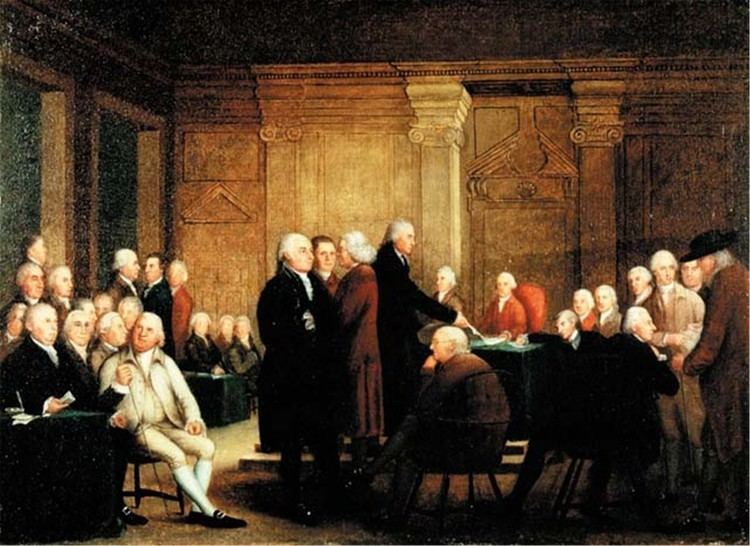Name Samuel Harding Role Cabinetmaker | Died 1758 | |
 | ||
Samuel Harding (died 1758) was an 18th-century American cabinetmaker, remembered for his Queen Anne style furniture and for the interior architectural ornament of Independence Hall, in Philadelphia, Pennsylvania, United States.
Contents
Independence Hall
Builder-architect Edmund Woolley (c. 1695-1771) began construction of the Pennsylvania State House (now Independence Hall) in 1732, and completed the building by 1748. The project's carvers were listed as Harding and Bryan Wilkinson.
The original staircase in the vestibule proved inadequate for so large a building, and a tower addition with a new staircase was proposed. The tower's foundations were laid in 1750, and its exterior construction was completed by 1753. Between 1753 and 1756, Harding executed (and probably designed) the interior architectural ornament for the tower stair hall and a remodeled vestibule. His bill listed all of the fixtures for the mahogany staircase, along with moldings, pediments, column capitals, tabernacle frames, and two keystones with carved "faces" – for which he charged £195.13.11. The bill was paid in part in 1757, and in full in 1758 (possibly, not until after his death).
He carved ionic capitals for what he called the "green room" (thought to be the Assembly Room), but it is unclear when the shell frieze within the room's tabernacle frame was carved—by Harding in the 1750s, or by Harding and/or Wilkinson in the 1740s.
A 54-foot giant tall clock by Thomas Stretch stood against Independence Hall's exterior from 1753 to 1828. Harding carved the 14-foot wooden bonnet that surrounded its face.
Other works
Assessment
Furniture expert Luke Beckerdite calls Harding "one of the most important carvers active in Philadelphia during the first half of the eighteenth century." He conjectures that the carver Nicholas Bernard either was trained or influenced by him.
